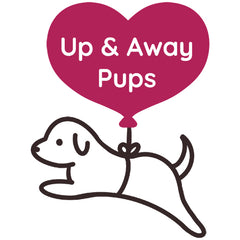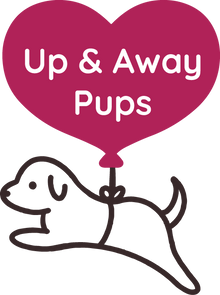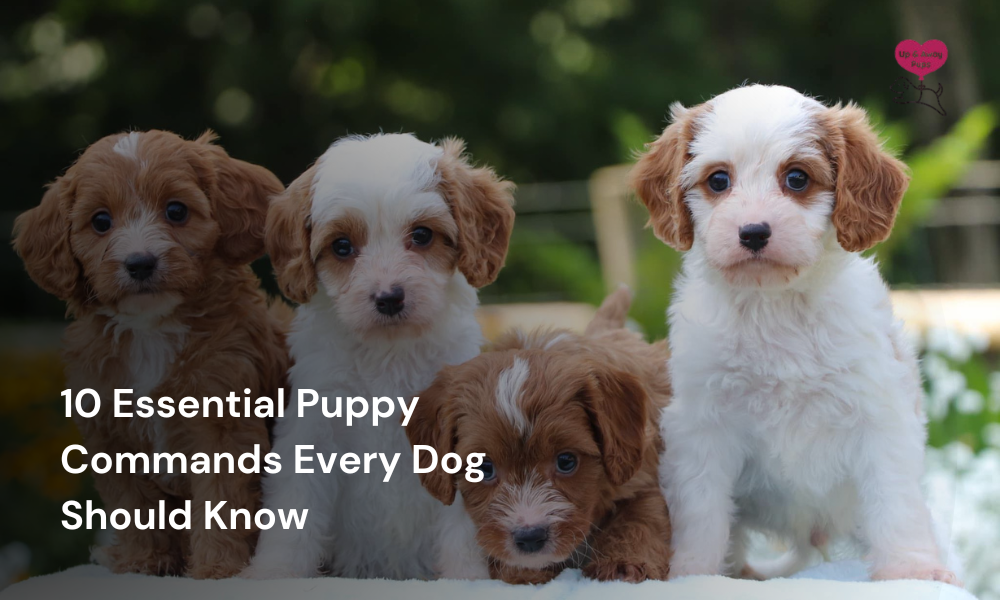10 Essential Puppy Commands Every Dog Should Know
Training your puppy with the right commands early on sets the foundation for a well-behaved, happy dog. This guide covers 10 essential puppy commands every dog should learn, from basic obedience like “Sit” and “Stay” to important safety cues like “Come” and “Leave it.” Each command helps your pup understand expectations, improves communication, and strengthens your bond. Whether you’re a first-time dog owner or brushing up on the basics, mastering these key commands can lead to a lifetime of good habits and joyful companionship.
Adding a new puppy to your household is an exciting endeavor. However, it also indicates the point of starting critical learning for you as a pet parent, as this will help shape your pup's behavior for the future. Early training builds a strong groundwork for safety, obedience, and a strong human-animal bond. The veterinary experts and behaviorists have highlighted that the puppies are most receptive to training between the ages of 8 to 16 weeks. This is the timeline that makes for a great window to instill the primary behaviors that will define the future of your furry companion.
Following a consistent and reward-based approach now can help build trust and prevent future behavioral issues. One of the most potential ways to enter the journey of pet parenting is by teaching your furball the essential puppy commands.
Quick Tips for Starting Puppy Training
Before entering the list of commands, it is essential to know about a couple of fundamental principles that can make training more fruitful. Few breeds like the Cavalier King Charles Spaniel respond well to early training, and when the routines stay consistent. Besides consistency, a positive learning environment, and good timing, becoming a catalyst to raise a perfect dog!
• Start Early: Ensure that you start the training sooner once your puppy comes home, especially when it is between 8 and 12 weeks of age. Early socialization is the perfect technique for helping your pup learn and retain its new skills.
• Keep Sessions Short: Puppies' attention spans are short. So, aim for five to ten minutes every session, a couple of times a day, instead of stretching with a single long one.
• Use Positive Reinforcement: Never refrain from rewarding good behavior. Rewards can be praise, treats, and toys. Avoid harsh punishment, as it triggers aggression and fear.
• Train in Low-Distraction Environments First: Start training in quiet spaces before introducing your pup to stimulating surroundings. Once commands are trustworthy at home, ensure to practice in bustling streets or parks.
Key Commands to Teach Your Puppy Early
If you are looking to establish a strong foundation across canine communication, then it is essential to master the ten basic commands we are going to share here. We will now explain each command, ways to train it, and why it is important.
1. Sit
Sit is the initial command that you should teach your pup, and it is for a great reason. It offers a straightforward, reliable way to gain your puppy's attention and establish more control across all types of situations. If your dog knows how to sit, then they can be asked to settle down before meals, when guests arrive at your home, and during walks. This is the ideal command that creates the effective pathway to more challenging behaviors that act as a behavioral reset button across the overstimulating spaces.

Small dog breeds like Teacup Shih Tzu respond positive to the command "sit" whenever they are taught in a calm tone or a steady repetition. Their eager-to-please nature makes them the perfect fit for short or consistent training sessions sooner. Training your pup to sit fosters obedience and offers them the natural way to soothe themselves. Consistency gets paired with treats and verbal praises that reinforce this important habit right from the start.
2. Stay
"Stay" helps to stretch your control, followed by the "sit" command, which teaches your pup to stay in one spot even with distractions around. It helps to boost structure and safety whether you are cooking in your kitchen, answering the door, or stopping by at the crosswalk.
You can start by commanding your dog to sit and then signaling them with your hand and calling out "stay." Ensure to take a few steps back and slowly increase your distance and time. Puppies have a natural tendency to follow, so rewarding them when they stay in their place can help lock this behavior.
This command helps add discipline to your pup's life while reinforcing their calm behavior in compact spaces. It proves effective especially when you crate train a pup, helping them relate the crate to comfort or relaxation.
3. Come
"Come" is one of the critical puppy commands since it helps to save their life. A calming recall can ensure that your pup returns to you even in dangerous or unpredictable situations like running towards traffic, escaping a leash, or approaching yet another aggressive animal.

The main trick to succeed here is to make this command a positive experience. You can initiate in quiet spaces while using an excited tone with rewards. Slowly start adding distractions while your pup gets better at responding. A recent research published by the American Veterinary Medical Association, dogs with a reliable recall are less prone to experience any injury outdoors or trauma, as it makes the command essential for long-term safety.
4. Down
The command "down" often takes a long time for a few pups to learn since it requires them to be more submissive and in a vulnerable position. But it is well worth a try. Teaching your pup to lie down is beneficial during travel, mealtime, or vet appointments. It also helps control overly anxious or energetic behavior.
You can use a treat to lure your pup into a position by lowering it onto the ground and dragging it forward slowly. Once your pup lies down completely, reward and praise it. You can practice this regularly to help build impulse control, creating a strong "off switch" for your pup's hyper behavior, especially in small breeds like Morkie. This command works well to manage the excitement, mainly during Morkie puppy training, where gentle handling and calm behavior can ensure long-term success.
5. Leave It
The phrase helps when unwanted or unsafe actions are involved, like picking trash, chewing on wires, and ingesting harmful things on walks. It not only trains your dog not to act on impulse but also to refer back to you to make decisions, making it safer and more disciplined.
Introduce a command by putting a treat next to the hand and making a closed fist. As your puppy sniffs it or paws it, tell it to leave it. As soon as they cease to make the effort, give them another reward on the other hand. To intensify further, transfer the treat to the floor or outside after practice. The command also helps to instill trust in your dog as it learns to resist the urge to jump and wait to be assured.
6. Drop It
The command drop will make your puppy voluntary drop items in its mouth, be it toys, socks, or things it should not have. Such instruction is essential in avoiding choking dangers or chewing destructively. It diminishes protective behavior when it comes to food or toys that could give rise to aggression when not taken care of.

Start by using a toy they are already used to, which your puppy can carry gently into their mouth. Hold a treat close to their nose and command them to drop it. As quickly as they drop the object, praise them with excitement using lots of words and give them the treat. This command leads to the development of a respectful exchange relationship over a period, whereby your dog will learn that giving up on an object leads to a positive consequence.
7. Heel
Heel teaches your dog to walk alongside you without pulling, weaving, or bolting off. This command is particularly useful in crowded locations, such as a vet clinic or on a hike, where control is important. It also trains your puppy to look at the speed and direction of the owner rather than free roaming.
Begin by going out with your dog on a short leash and bringing a reward with you. Use the word heel and encourage your puppy to remain near you. If they pull ahead, stop and reset the walk. Gradually increase the duration between rewards. Higher-energy breeds like the Miniature Schnauzer can benefit greatly from the introduction of the heel command due to their curiosity and disposition to pulling on the leash when they are not provided with appropriate structure.
8. Wait
“Wait” is a versatile command that introduces temporary restraint. As compared to staying where your dog stays fixed to the position until released, wait instructs your puppy to hold until they proceed on. Examples include leaving the house, getting into the car, and running into a crowd.
Teaching this command begins at the doors or thresholds. Stand before your dog and ask him to wait, pointing with your body or hand. When your puppy holds still for a few seconds, release him with a term such as "okay." This order creates a sense of manners and control, which helps minimize foolishness and unthinking action during energy-high cases.
9. Watch Me
Watch me build focus and attention by teaching your puppy to look at you when you want him or her to. This practice is quite effective in obedience classes, on busy streets, or when there are distractions. It is an established behavior upon which communication is constructed and the human-animal bond is enhanced.
Hold a treat between your eyes and say, “Watch me”. When your puppy makes eye contact, reward immediately. Gradually increase the time and alternate the setting to avoid any discrepancy. This helps to instill the command sooner if you own small dog breeds like Yorkie Poos. So, during Yorkie poo training, it is particularly beneficial to use focus-building commands such as watch me to ensure the distractible intelligent breed learn to listen to you learn to pay attention to you, even when distraction.

A report from UC Davis Veterinary School highlighted that dogs trained to maintain eye contact with their owners were considerably more responsive to commands and verbal cues. This is the most effective command for building emotional connections and long-term obedience.
10. No
No can be used as an easy form of correction to stop unwanted actions and lead your dog to more satisfactory decisions. It must never be delivered angrily or in fear, but calmly yet firmly to emphasize an unacceptable action, such as chewing shoes or jumping on visitors.
Timing is essential. Answer no during behavior, and then redirect your pup to a suitable alternative, such as a chew toy or sitting calmly. Follow up with praise when they respond positively. Do not excessively say no without instruction, or your dog may be confused.
Conclusion
Early training makes your puppy a self-assured, well-trained adult dog. These ten simple commands develop a good background in behavior and enhance safety and communication. They make your dog live a long and good life and strengthen your friendship. Although consistency, patience, and positive reinforcement are the keys to success, a few minutes of practice every day can result in impressive improvement. Comprehending and implementing these essential puppy commands can contribute to your pet feeling safe, responsive, joyful, and calm.


